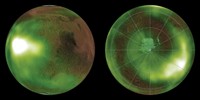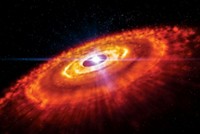Advertisement
Grab your lab coat. Let's get started
Welcome!
Welcome!
Create an account below to get 6 C&EN articles per month, receive newsletters and more - all free.
It seems this is your first time logging in online. Please enter the following information to continue.
As an ACS member you automatically get access to this site. All we need is few more details to create your reading experience.
Not you? Sign in with a different account.
Not you? Sign in with a different account.
ERROR 1
ERROR 1
ERROR 2
ERROR 2
ERROR 2
ERROR 2
ERROR 2
Password and Confirm password must match.
If you have an ACS member number, please enter it here so we can link this account to your membership. (optional)
ERROR 2
ACS values your privacy. By submitting your information, you are gaining access to C&EN and subscribing to our weekly newsletter. We use the information you provide to make your reading experience better, and we will never sell your data to third party members.
Physical Chemistry
Wild Chemical Environment Detected Inside A Newly Forming Star
Astronomy finding challenges long-held models of star formation
by Elizabeth K. Wilson
February 17, 2014
| A version of this story appeared in
Volume 92, Issue 7
Astronomers have discovered a previously unknown chemical processing factory inside the workings of a newly forming star—a discovery that may change fundamental models of how stars and planetary systems are born (Nature 2014, DOI: 10.1038/nature13000). A team led by Nami Sakai of the University of Tokyo used the Atacama Large Millimeter/submillimeter Array radio telescopes in Chile to study a nearby star-forming region. The system consists of a flat rotating envelope of gas that is being fed by a stream of gas from interstellar clouds, with a more concentrated rotating disk at the center. The scientists say they discovered a drastic chemical change at the boundary between the envelope and disk. In the larger envelope, they predominantly detected cyclic C3H2, but this compound abruptly diminishes and is suddenly replaced by SO in the disk. The researchers conclude that this transition results from the sudden change in environment as the gas hits the rapidly swirling disk: The kinetic energy of the gas is converted to rotational energy and, as a result, a lot of heat. They suggest that two unrelated processes may be occurring: The C3H2 is destroyed by reaction with O, while SO is ripped off dust grains and liberated as gas. In solar evolutionary models, astronomers had been presuming that an unchanging chemical composition of interstellar clouds served as the starting conditions for forming stars.





Join the conversation
Contact the reporter
Submit a Letter to the Editor for publication
Engage with us on Twitter